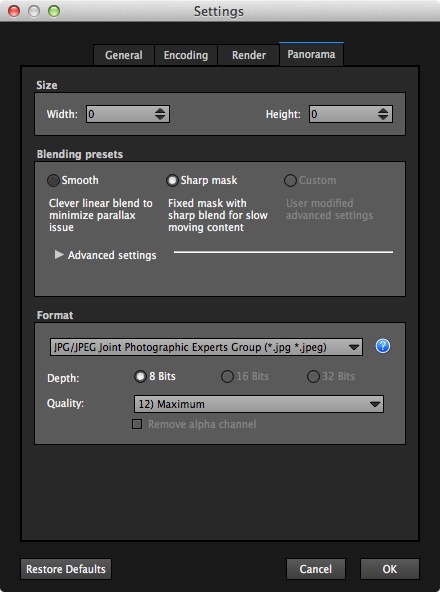


So we shoot at 960p to utilize the entire GoPro sensor.
Dwarp autopano video pro 720p#
When you shoot 16:9 at 720p or 1080p resolutions, you’re not utilizing the full size of the sensor, which results in cropping off some of the shot. The sensor on a GoPro has a 4:3 aspect ratio. Want to talk resolution? I thought you might. One bad camera will ruin your entire stitch. This tiny trick is a game changer.Įxpert tip: Before shooting, eyeball the front LCD panel on the cameras to make sure the settings all match. Before you get too excited about this efficient solution, I should mention that this remote triggering resulted in slightly out of sync cameras (5–10 frames on average).Īs soon as the cameras start to record, we always give a solid clap as a sync point. Instead of clicking record on each camera, we use a GoPro WiFi remote. This provides us with more flexibility in post-production to get to a true sync point between the cameras. That’s why we record at the highest frame rate we can on the GoPro 3+ Silvers - 60 frames per second. When those puppies are even a few frames off, all hell breaks loose. Successful spherical stitching begins with synced up cameras. We used text files on our SD cards to indicate which card corresponded with which camera.We labeled our cameras to keep everything organized.We bought this 8-port USB hub so we could charge the GoPros without taking them out of the rig.We also set ourselves up for success with some simple hacks: We picked up this 7-camera 360 rig from 360 Heroes. The 360 player is a beta feature, and is best viewed in Chrome. Here’s the video we made to launch it internally! “After a few goes at stitching footage from 14 cameras, we shifted to a simpler, non-3D setup that required half of the cameras.”ĭuring a recent Hackathon, we created a beta version of a 360 Wistia video player.


 0 kommentar(er)
0 kommentar(er)
